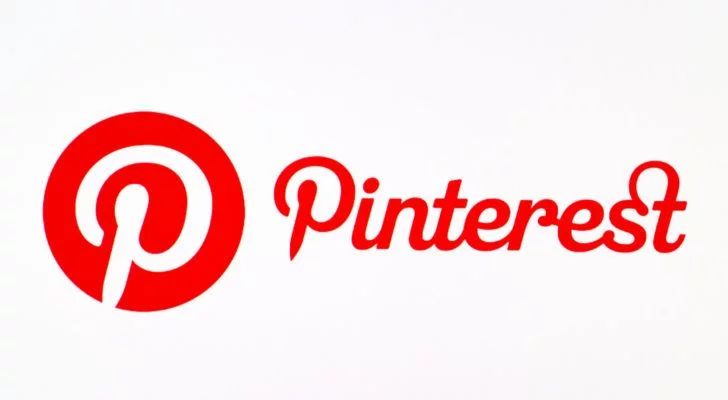
I used to think Pinterest was just a place to save pretty pictures. But then I realized something that changed everything: Pinterest is actually a search engine, not a social media platform. If you’re not thinking about Pinterest SEO, you’re leaving serious traffic and potential customers on the table.
The beautiful thing about Pinterest SEO is that most people aren’t doing it right, which means there’s huge opportunity for you to stand out. Let me explain how Pinterest SEO works and show you how to use it to drive real traffic to your website or blog.
What Is Pinterest SEO?
Pinterest SEO is the practice of optimizing your pins, boards, and profile so that your content shows up in Pinterest search results when people look for topics related to your niche. Just like Google has an algorithm that decides which websites rank highest, Pinterest has an algorithm that determines which pins appear first when someone searches.
The key difference is that Pinterest users are actively searching for inspiration and ideas. They’re in a buying mindset, looking for solutions to their problems. This makes Pinterest traffic incredibly valuable for bloggers, businesses, and content creators.
How the Pinterest Algorithm Works
The Pinterest algorithm looks at several factors to decide which pins to show in search results. First, it considers how relevant your pin is to what someone searched for. If someone searches for homemade skincare recipes and your pin is about that exact topic, it’s relevant. Second, the algorithm looks at how people interact with your pins. Saves, clicks, and shares tell the algorithm that your content is valuable.
Third, the algorithm considers the authority of your account. Accounts that consistently share quality pins and have been on Pinterest longer tend to rank higher. Fourth, freshness matters. Newer pins sometimes get a boost in visibility because Pinterest wants to show users current content. Finally, the algorithm looks at your description, keywords, and how you’ve organized your content.
Understanding these factors helps you create pins that the algorithm loves and that real people want to interact with.
Keyword Research for Pinterest

Keywords are the foundation of Pinterest SEO. You need to understand what people are actually searching for on Pinterest so you can create pins around those searches. Use the Pinterest search bar to see what auto-completes when you start typing. These suggestions are actual searches people are doing.
You can also use keyword research tools designed for Pinterest, or even Google Keyword Planner to find popular search terms in your niche. Once you have a list of keywords, use them in your pin titles, descriptions, and board names. This tells the Pinterest algorithm what your content is about and helps it match your pins to the right searches.
Optimizing Your Pin Titles
Your pin title is one of the most important ranking factors for Pinterest SEO. Make it descriptive and include your main keyword near the beginning. Instead of just saying Chocolate Cake Recipe, say Easy Homemade Chocolate Cake Recipe For Beginners. The longer, more descriptive title with keywords helps the algorithm understand what your pin is about.
Your title should be compelling enough that people actually want to click it when they see it in search results. Think about what words would make someone stop scrolling and click on your pin.
Writing Powerful Pin Descriptions
Your pin description is another crucial SEO element that many people ignore. Write a two to three sentence description that includes your main keyword naturally. Explain what the pin is about and why someone should click it. This description appears when people hover over your pin and helps the algorithm understand your content.
Don’t stuff your description with keywords unnaturally. Write for real people first, and include keywords second. The best descriptions read naturally while still being optimized for search.
Creating SEO Friendly Boards
Organize your pins into boards that match specific keywords and topics. If you have a blog about wellness, create boards like Healthy Breakfast Ideas, Natural Skincare Routines, and Home Yoga Workouts. Name your boards with keywords so the Pinterest algorithm understands what each board contains.
Within each board, keep your pins focused on that specific topic. A mixed board with random content confuses the algorithm and makes it harder for your pins to rank for specific searches.
Using Rich Pins for Better SEO
Rich pins are special pins that include extra information like price, ingredients, or article headline right on the pin itself. Rich pins are easier for the Pinterest algorithm to understand and often get better performance than regular pins. If you have a blog, use the Rich Pin feature to let Pinterest pull information directly from your website.
Rich pins tell the Pinterest algorithm exactly what your content is about without having to guess. This extra clarity helps your pins rank better and get more clicks.
Building Authority and Consistency
Pinterest rewards accounts that post consistently and engage authentically. Create a content calendar and commit to pinning regularly. Most successful Pinterest accounts pin multiple times daily. You don’t have to create new pins constantly. You can repin your best content multiple times throughout the year and create variations of successful pins.
Engage with other users by saving and commenting on their pins. This builds community and tells the Pinterest algorithm that your account is active and valuable.
Link Building and Click Throughs
Every pin should link to something valuable, whether that’s your blog post, product page, or landing page. The more clicks your pins get, the better they perform in the algorithm. Write pin descriptions that make people want to click and drive them to quality content.
Track which pins get the most clicks and create more variations of your best performing content. The Pinterest algorithm notices when your pins get high click through rates and boosts them in search results.
Patience and Long Term Strategy
Pinterest SEO is different from Google SEO in one important way: it takes longer to see results, but the results last much longer. A pin you created six months ago might still be getting traffic because Pinterest treats pins as evergreen content. Be patient and keep optimizing based on what’s working.
Review your Pinterest analytics regularly to see which pins are performing best. Double down on what works and adjust what doesn’t. Over time, your Pinterest traffic will compound as you build a library of highly optimized, evergreen pins.
Unlock Pinterest Traffic Today
Pinterest SEO might seem complicated at first, but it’s actually straightforward once you understand the fundamentals. By using the right keywords, writing optimized descriptions, creating organized boards, and staying consistent, you can unlock massive traffic from Pinterest. Remember that Pinterest users are actively searching for solutions, which means they’re ready to engage with your content. Start applying these Pinterest SEO strategies today and watch your traffic grow.

